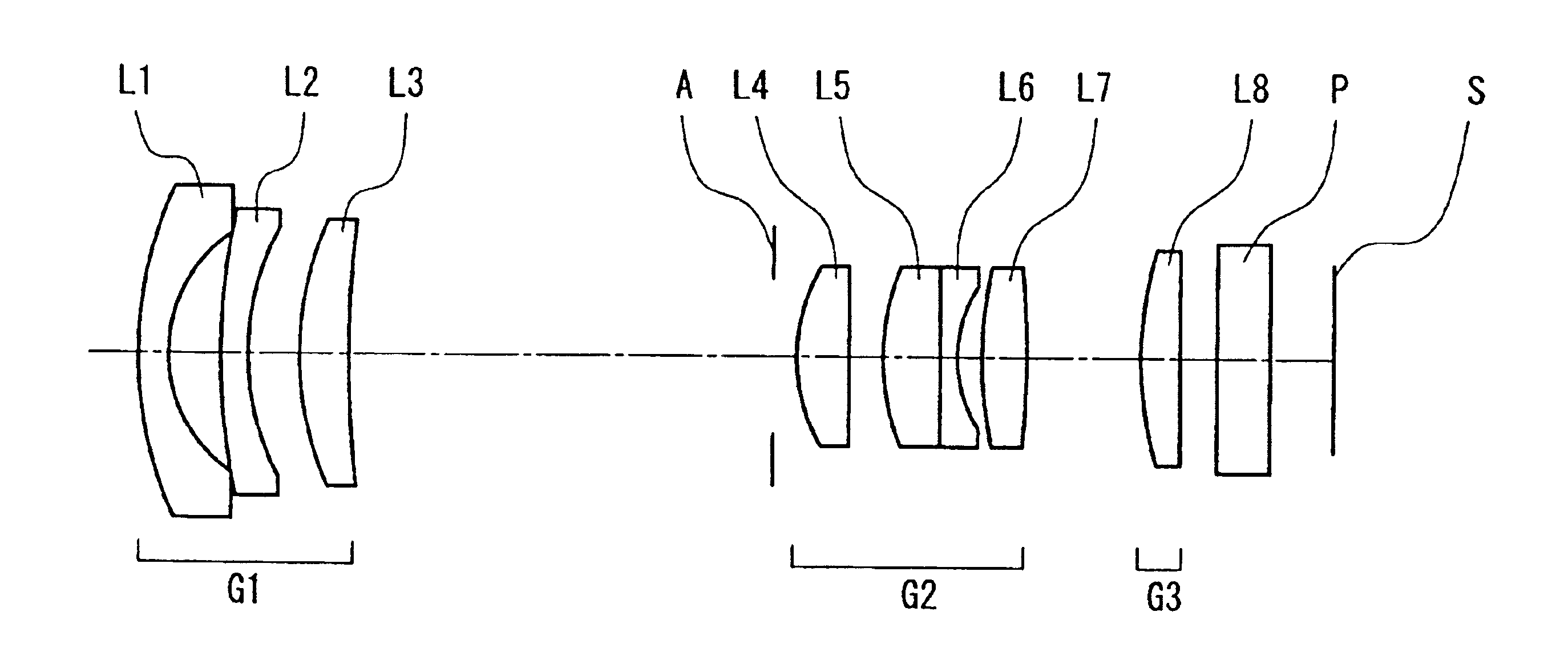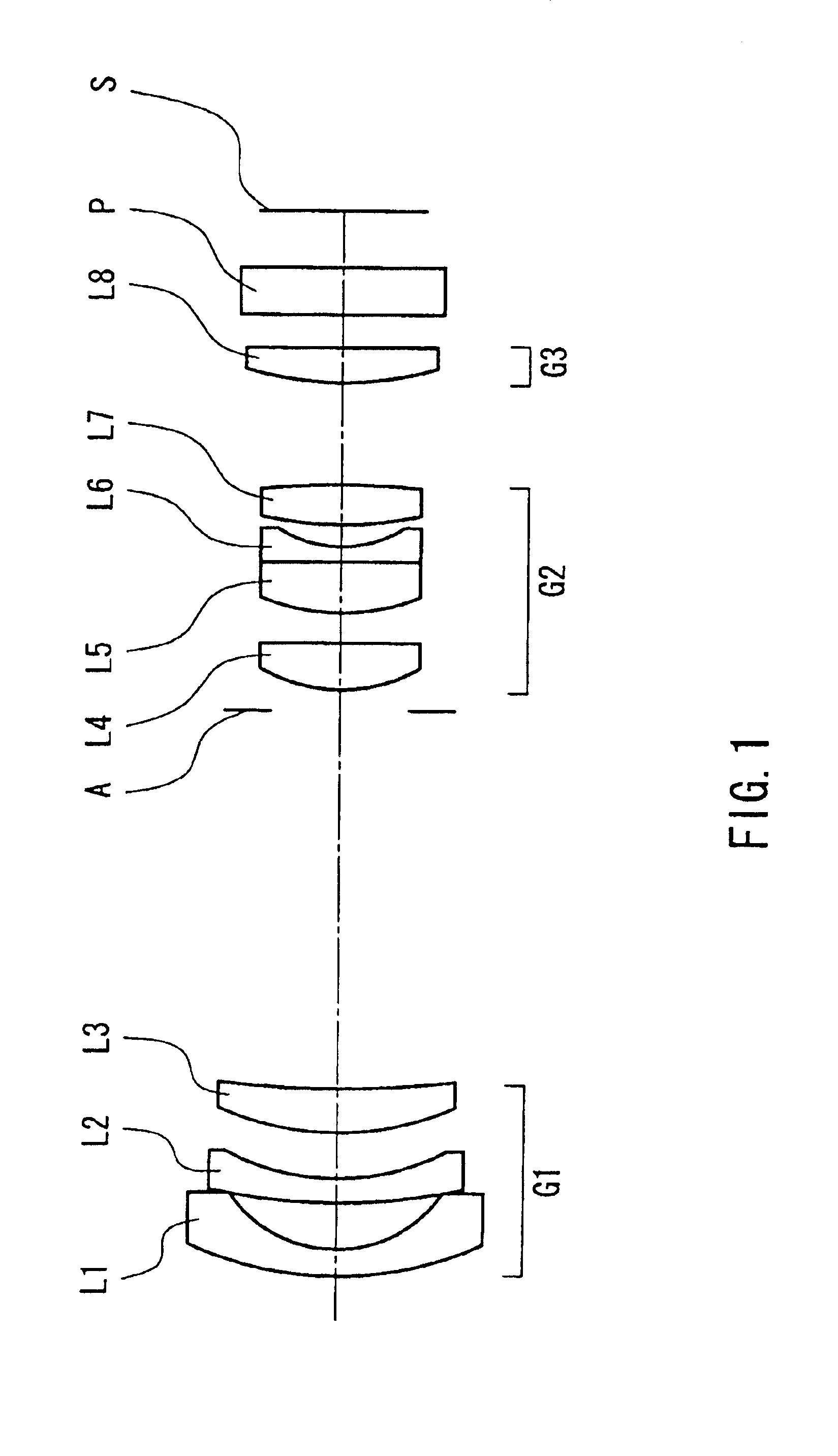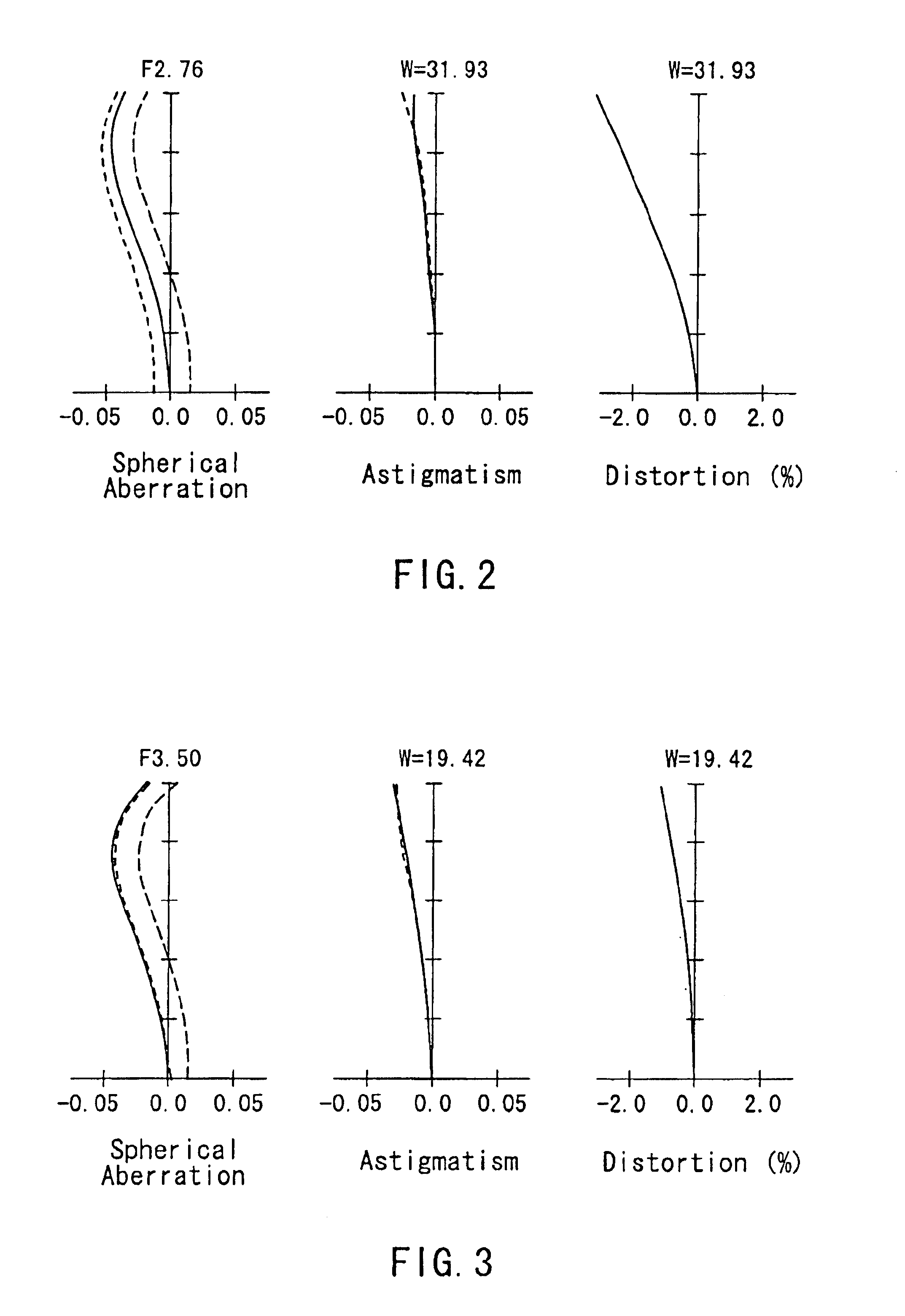Zoom lens and electronic still camera using it
a technology of electronic still camera and zoom lens, which is applied in the field of zoom lens and electronic still camera, can solve the problems of short overall optical length, inability to make high resolution overall images, and long overall optical length of the second lens group, and achieves short overall optical length and high resolution. , the effect of high resolution
- Summary
- Abstract
- Description
- Claims
- Application Information
AI Technical Summary
Benefits of technology
Problems solved by technology
Method used
Image
Examples
first embodiment
[0161]FIG. 1 is a layout drawing showing the configuration of a zoom lens according to a first embodiment of the present invention.
[0162]As shown in FIG. 1, the zoom lens of this embodiment is made of a first lens group G1 having a negative power, an aperture stop A, a second lens group G2 having a positive power, and a third lens group G3 having a positive power, arranged in that order from the object side (left side in FIG. 1) toward the image plane S side (right side in FIG. 1), and includes eight lenses.
[0163]The first lens group G1 is made of a first lens L1 that is a negative meniscus lens whose surface with strong curvature is facing the image plane S, a second lens L2 that is a negative meniscus lens whose surface with strong curvature is facing the image plane S, and a third lens L3 that is a positive lens whose surface with strong curvature is facing the object, arranged in that order from the object side.
[0164]The second lens group G2 is made of a fourth lens L4 that is a...
second embodiment
[0196]FIG. 6 is a layout drawing showing the configuration of a zoom lens according to the second embodiment of the present invention.
[0197]As shown in FIG. 6, the zoom lens of this embodiment is made of a first lens group G1 having a negative power, an aperture stop A, a second lens group G2 having a positive power, and a third lens group G3 having a positive power, arranged in that order from the object side (left side in FIG. 6) toward the image plane S side (right side in FIG. 6), and includes eight lenses.
[0198]The zoom lens shown in FIG. 6 has the same configuration as the zoom lens detailed above in the first embodiment (see FIG. 1), and is different only in the manner in which the seventh lens L7 is provided with an aspherical surface. That is, in the zoom lens shown in FIG. 1, the surface, whereas of the seventh lens L7 that is on the object side is an aspherical surface, whereas in the zoom lens according to this embodiment and shown in FIG. 6, the surface of the seventh l...
third embodiment
[0211]FIG. 11 is a layout drawing showing the configuration of a zoom lens according to a third embodiment of the present invention.
[0212]The zoom lens shown in FIG. 11 has the same configuration as the zoom lens detailed above in the second embodiment (see FIG. 6), and is different only in the manner in which the first lens group G1 is provided with aspherical surfaces. That is, in the first lens group G1 of the zoom lens shown in FIG. 6, the surface of the second lens L2 on the image plane S side is an aspherical surface, whereas in the first lens group G1 of the zoom lens according to this embodiment and shown in FIG. 11, the surface of the first lens L1 on the image plane S side is an aspherical surface. More specifically, the surface of the second lens L2 on the image plane S side is an aspherical surface whose local radius of curvature monotonically increases within the range from its center to the effective diameter.
[0213]It is preferable that the various conditions set forth...
PUM
 Login to View More
Login to View More Abstract
Description
Claims
Application Information
 Login to View More
Login to View More - R&D
- Intellectual Property
- Life Sciences
- Materials
- Tech Scout
- Unparalleled Data Quality
- Higher Quality Content
- 60% Fewer Hallucinations
Browse by: Latest US Patents, China's latest patents, Technical Efficacy Thesaurus, Application Domain, Technology Topic, Popular Technical Reports.
© 2025 PatSnap. All rights reserved.Legal|Privacy policy|Modern Slavery Act Transparency Statement|Sitemap|About US| Contact US: help@patsnap.com



